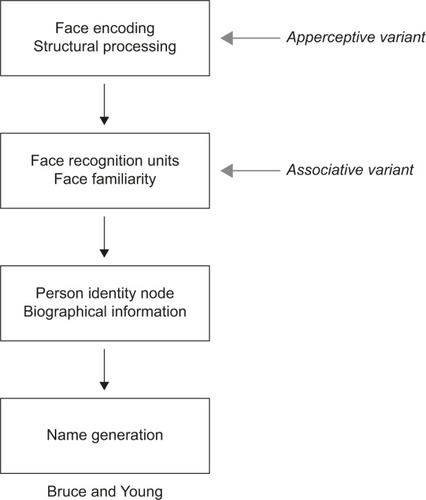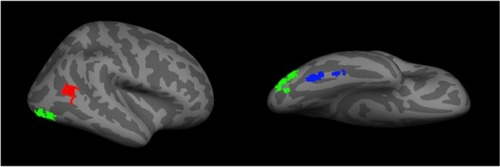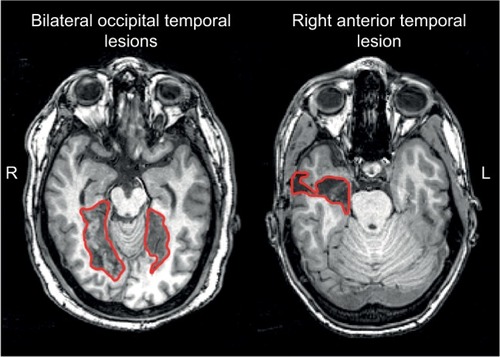Figures & data
Figure 1 Adaption of the Bruce and Young model.

Table 1 Suggested inclusion and exclusion criteria for the diagnosis of acquired and developmental prosopagnosia
Figure 2 A representation of the core face network – including the fusiform face area (blue), the occipital face area (green), and the posterior superior temporal sulcus (red).

Figure 3 Examples of lesions that produce acquired prosopagnosia.

